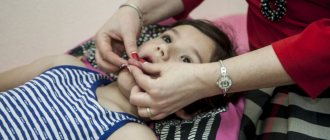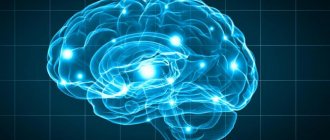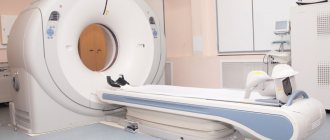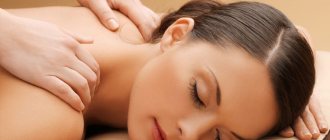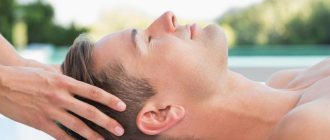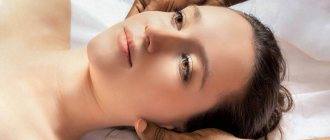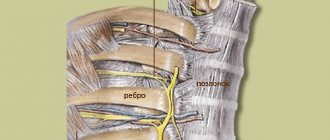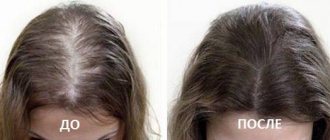One of the methods that a speech therapist uses in his work is probe massage. This procedure applies to:
- stimulation of speech motor skills;
- improving the muscle tone of the articulatory apparatus.
Special probes are used for massage. With the help of these tools, the speech therapist influences the labial muscles and tongue, cheeks, and soft palate by sliding, pressing, moving and rubbing. The described manipulations with individual areas of the articulatory apparatus lead to its improvement and restoration of proper functioning. But in addition to normalizing sound pronunciation, probe massage has a beneficial effect on the nervous system, which additionally stimulates the development of children's speech.
As before any medical procedure, probe massage requires a thorough speech therapy diagnosis, during which the facial and masticatory muscles that are part of the articulatory system, as well as the lips, cheeks, tongue and soft palate are examined. Based on the results of the examination, the location and extent of the lesion is determined, and the time required for treatment is specified. Preliminary diagnostics is also aimed at determining the most effective massage technique for taking into account all the characteristics of the patient and his speech impediment. The time it will take to eliminate deficiencies is influenced by the following factors:
- degree of severity of the defect;
- patient's age;
- his individual characteristics.
It should be noted that a neurologist (children's neurologist) refers to massage courses after a preliminary examination of the patient. And the speech therapist chooses a specific massage technique and its intensity.
What are speech therapy probes?
Probe massage, as the name suggests, is carried out using special metal instruments. They should not be confused with Rau probes, which are used to produce sounds.
The author of the massage complex is E.V. Novikova, who received a patent for her development in 2000.
The set of probes includes 8 main and 4 additional probes with specific functionality. Various types of probe effects on the affected areas stimulate sensitivity and improve connections between peripheral organs and the cerebral cortex.
The tools are used to work with articulatory organs and the forearm. Massage areas are selected individually, depending on what the patient complains about. With the help of probes, you can relax the facial muscles and increase their tone, get rid of spasms. And the impact on the muscles of the leading hand develops motor skills and helps in the formation of handwriting.
Since 2000, technology has not stood still, and some specialists have made their own improvements. For example, famous speech therapists T.A. Vorobyov and O.I. Krupenchuk developed their own version of 9 instruments.
VIVO CLINIC specialists use massage speech therapy probes from all authors in their work, selecting individual sets of tools based on the goals and objectives of correction.
Spot diagram
Acupressure is a type of reflexology in which mechanical action is applied to hypersensitive points on the patient’s body.
When pressing on biologically active points, the hyperexcitability of the speech centers is relieved. This massage can be performed either with the help of a massage therapist or independently. One course consists of 15 procedures. For the first four days, the massage complex is carried out daily, and then every other day.
To achieve and consolidate a positive therapeutic effect, several courses are carried out . The break between the first and second courses is 2 weeks, between the second and third - 3-6 months. Then the course is repeated every six months for 2-3 years.
After one course, improvement may occur, but you need to continue practicing to consolidate the effect.
If stuttering symptoms intensify during the break between courses, the next course should be started immediately, without waiting for the end of the break.
During acupressure, the following occurs:
- relaxation of articulatory and respiratory muscles, vocal cords;
- the patient’s psychological and emotional state improves;
- immunity increases;
- blood circulation and metabolism improve;
- signs of stuttering decrease or disappear completely.
Biologically active points:
- Point 1 – located on the wrist near the palmar surface, between the tendons. These are symmetrical points.
- Point 2 – located on the inside of the forearm, 3 cm above the wrist in the midline, between the tendons. Also symmetrical.
- Point 3 – located on the back of the shoulder, 3-4 cm above the elbow joint.
- Point 4 – located on the lower leg, under the kneecap. Symmetrical point.
- Point 5 - located on the back between the spinous processes of the fifth and sixth thoracic vertebrae, 3-4 cm from the midline.
- Point 6 – near the auricle, in the fossa above the zygomatic arch. Also symmetrical.
- Point 7 is a point on the shin, 10 cm above the medial malleolus. It is symmetrical.
- Point 8 - on the forearm, in the notch of the styloid process of the radius, 5 cm above the midline of the wrist. Has symmetry.
- Point 9 – located on the back of the neck, right in the middle along the hairline. Asymmetrical.
- Point 10 – in the palm area above the head of the fifth metacarpal bone. Symmetrical point.
How to do?
Before starting the procedure, you need to find acupuncture on the body . Gently press it, the patient will feel a slight aching pain or a feeling of aching, which means that the point has been found correctly. Massage with slow, smooth, light movements.
The acupuncture is applied for about 30 seconds, then the pressure is released, and the pressure is applied again. Massage one point for 4-5 minutes.
After the procedure, there should be no visible pits on the body . One complex lasts no more than 40-50 minutes for adults, no more than 30 minutes for children. You should start a massage course by working on 2-3 zones, with a gradual increase in their number.
In what cases will speech therapy probe massage help?
- for motor alalia, when the child has a delay in speech development and needs a powerful push to “start” speech. The purpose of massage is to improve the flow of signals into the brain for the development of affected areas. After the procedure, the patient will begin to make onomatopoeia.
- for dysarthria (pronunciation disorder caused by impaired innervation of the articulation organs), including cerebral palsy. Muscle tone is normalized, the conductivity of nerve impulses improves.
- for stuttering, to reduce the tone of the articulator muscles.
- used in the rehabilitation of lost speech functions in adult patients who have suffered acute cerebrovascular accident. The pronunciation aspect of speech improves, the tone of the affected muscles is normalized, hypersalivation is reduced, chewing and swallowing are improved.
- with hypersalivation (increased salivation) at any age.
- with impaired swallowing and chewing.
- with limited mobility of the tongue due to shortening of the hyoid ligament. For mild impairment, massage will improve its elasticity. If the lifting disorder is more severe, surgical intervention will be required.
- with rhinolalia. Speech therapy massage will smooth out scars that negatively affect the mobility of organs, postoperative sutures, and improve muscle function.
Are there any contraindications for probe massage?
Contraindications can be temporary or absolute.
Temporary contraindications:
- heat;
- poor health, general fatigue;
- nausea and vomiting;
- high blood pressure;
- skin rashes;
- any infectious diseases;
- oral infections, rashes on the oral mucosa (stomatitis, gingivitis);
- dental problems (caries, periodontal disease, etc.);
- viral diseases, such as herpes.
After the disappearance of the above reasons, it is possible to perform a massage complex.
Absolute contraindication:
- all types of epilepsy (massage can cause an epileptic seizure).
How is massage performed?
The massage session is carried out lying down or in any other comfortable position that will allow you to relax as much as possible. In some cases, the mother may be present in the office.
The speech therapist selects methods of influencing the muscles in each case individually, after examining the condition of the articulatory apparatus.
A specialist performs speech therapy massage only wearing special disposable gloves, a medical gown and only sterile instruments . All equipment undergoes mandatory medical sterilization after each lesson.
How often is massage performed?
Typically, speech therapy massage is usually carried out in courses, the number and frequency of which are prescribed by a speech therapist or supervising doctor. Their duration is selected individually for each patient. The average number of procedures is usually around 10, lasting from 5 to 25 minutes. There is a month's break between courses. Most often, it takes 3-4 courses to see results, but sometimes one is enough. It is important to remember that the result will appear only if the courses are regular.
The duration of the procedure is influenced by the patient’s age, the degree of damage and individual characteristics.
For example, some speech therapists prefer to preface the session with a massage before all their classes.
Stuttering in a 3 year old child
If you notice that your 3 year old child is stuttering, you should follow these instructions:
- It is necessary to make sure that the child speaks less, try not to ask him unnecessary questions - to which you want to hear the answer! If a child asks you about something, you need to answer him;
- if you have the opportunity to refuse to attend kindergarten, be sure to do so and avoid crowds of people;
- keep your child busy with board and other entertaining games, they perfectly develop fine motor skills and calm the nervous system;
- Be sure to contact a good children's speech therapist and neurologist.
The main thing is not to overload the child - this can negatively affect him, it is necessary to take the necessary measures from the first manifestations.
What are the advantages and disadvantages of probe speech therapy massage?
Advantages:
- acceleration of sound production;
- development of motor skills;
- improvement of muscle function;
- increased tone;
- hypersalivation;
- No complex equipment or special conditions are required to carry out the procedure.
Perhaps there is only one drawback: probe massage cannot be used as the only means of combating speech disorders. Treatment of severe speech disorders may take 3-4 years and will require a combination of various methods: physical and drug therapy, massages (speech therapy and general), regular visits to a therapist and psychologist (the result of which should be the development of speech at all levels, the development of motivation and development higher mental functions).
Symptoms
The main signs of speech impairment are as follows:
- spasms of the speech apparatus when the child pronounces sounds;
- long pauses between spoken sounds;
- repetition of syllables and sounds, words.
However, there are also indirect signs that accompany the main symptoms. These include:
- irritability;
- communication problems, avoidance of communication;
- aggressiveness;
- tearfulness, touchiness.
When diagnosing stuttering in children, the doctor will pay attention to the psychological state. The disease may be accompanied by isolation, refusal to communicate with peers and adults, nervous tics, fears, anxiety, phobias, etc. Sometimes a child suffering from a speech disorder may also suffer from insomnia, decreased appetite, and gastrointestinal dysfunction.
If stuttering is not treated on time, there is a possibility of developing social phobia, nocturnal enuresis and other ailments. Parents must understand that stuttering does not always go away on its own; measures must be taken so that the illness does not leave an imprint on the child’s personality. If corrective measures are refused, children may experience difficulties in building relationships with others, and developmental delays often occur.
Are there any other “tricks” when performing a massage?
The child is introduced to the probes gradually, non-violently, which is also the key to success. The child needs encouragement.
For an adult patient, the mechanisms of action of a particular technique are explained, rational psychotherapy takes place, and the final result is visualized.
It is important to know that in inept hands massage can cause unpleasant sensations and reverse reactions of muscles (increased tone), injury to the frenulum, increased gag reflex, etc. The condition for the positive effect of massage is the individual choice of technique for influencing the muscle, which will be provided by someone specially trained in this. speech therapist. So entrust its execution to professionals.
VIVO CLINIC offers speech therapy probe massage services. You can make an appointment with a speech therapist on the website at a convenient time. We are waiting for you at the reception!
Recommendations for parents
Treatment of stuttering in children, as well as identification of the causes of speech defects, is carried out by a doctor. But the role of parents in therapy is very important. It is important to behave correctly and follow the following doctor’s recommendations:
- minimizing emotional stress. Avoid aggressive games, listening to loud music, watching TV for long periods of time, or keeping your child at the computer;
- relaxing leisure. Instill in your child a love of classical music and good cartoons, play calm games, read fairy tales, try to get positive emotions and impressions together;
- mode control. Make sure your child gets enough rest and take frequent walks in the fresh air.
A friendly home environment is important at all stages of treatment. It is not recommended to scold the child, shout at him or laugh, or criticize his results if the defect persists at first. It is important to encourage the start of therapy and encourage the baby, encourage him to trust the doctor.
It is very important to maintain a positive atmosphere even after successful correction of stuttering in children. Only in this case can the risk of relapse be minimized.
